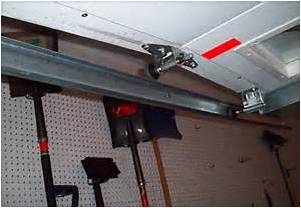Garage Door Maintenance
 If you have the time, tools and don’t mind getting your hands dirty, it’s possible to carry out some garage door system safety and maintenance tasks yourself. However, if you’re not confident in carrying out these tests yourself, it’s always safer to have them performed by a trained service technician.
If you have the time, tools and don’t mind getting your hands dirty, it’s possible to carry out some garage door system safety and maintenance tasks yourself. However, if you’re not confident in carrying out these tests yourself, it’s always safer to have them performed by a trained service technician.
For a qualified garage door maintenance company to quote for free, click here.
Do It Yourself
Before you begin any maintenance or safety checks on your garage door system, it’s wise to let anyone in your household know that the garage door is not to be operated until you are finished
The following tests and related maintenance should be performed in the order in which they appear:
1) Monthly visual inspection: Stand inside the garage with the garage door closed. Look over the garage door springs, cables, rollers, pulleys and mounting hardware (such as hinges) for signs of wear or damage.
- Is there any signs of cable wear or fraying?
- Is the mounting hardware becoming loose?
- If something doesn’t look quite right – or doesn’t sound quite right – it could be the symptom of a more serious issue. Have the garage door system inspected by a trained service technician.
2) Monthly door balance test: If your door is equipped with an automatic opener system, close the door and disconnect the automatic opener. Once you are able to, lift the door manually – it should lift smoothly with little resistance and should remain fully open. If it’s difficult to open or does not remain open, the door may be out of balance and should be serviced by a trained service technician.
3) Monthly reversing mechanism test: If your door is equipped with an automatic opener system, ensure the door is fully open. Now, lay a piece of wood such as a section of a 2×4 on the floor in the center of the garage door opening where the door would touch the floor. Push your garage door opener’s transmitter or wall button to close the door. When the door strikes the wood, the door should automatically reverse. If the door does not automatically reverse, the door should be serviced by a trained service technician.
Note: garage door openers manufactured after January 1, 1993 are required by federal law to be equipped with a reversing mechanism and a photo eye or edge sensor as added measures of safety to prevent entrapment. If your system does not have these features, replacement of your automatic operating system is recommended.
4) Monthly photo eye test: With the door fully open, push your garage door opener’s transmitter or wall button to close the door. Wave a long object, such as a broomstick, in front of one of the door’s photo eyes so it “breaks the beam.” The door should reverse.
If it does not reverse and reopen, pull the broomstick out of the path of the closing door and close the door. With the door in the closed position, clean the photo eyes with a soft, dry cloth. Gently adjust the photo eyes by hand if they appear to be out of alignment. Open the door and repeat the photo eye test.
If the door still does not reverse and reopen, the door should be serviced by a trained service technician.
5) Monthly force setting test: With the door fully open, push your garage door opener’s transmitter or wall button to close the door. While the door is closing, hold up the bottom of the door with your hands outstretched and stiff. If the door does not easily reverse and continues to close, release the door and pull your hands away immediately.
If the closing force is excessive, the door should be serviced by a trained service technician.
6) Semi-annual lubrication: Perhaps the easiest of the maintenance, simply apply a small amount of spray lubricant to the door’s hinges, rollers and tracks.
